What colors do you associate with October? Some folks visualize the reds and golds of fall leaves. Many people may picture the orange pumpkins and black cats that symbolize Halloween. But more and more people are thinking pink in October.
That’s because October marks Breast Cancer Awareness in the US: a time dedicated to raising awareness about breast cancer diagnoses, promoting early detection, and supporting those affected by the disease.
As with bringing awareness to any disease, it’s an important cause — breast cancer continues to devastate women around the world. As of 2022, there were 2.3 million women diagnosed with breast cancer worldwide. In the US, cancer is the second leading cause of death for women, with the highest risk borne by women of color.
As awareness months go, breast cancer is one of the most recognizable, known for its signature pink support ribbons. The color pink has grown to represent breast cancer awareness so much you’ve likely seen it everywhere, from apparel to jewelry to even food and drink.
While many companies “go pink” in support of breast cancer awareness, not all of their offerings promote good health or are in the best interest of people with cancer (a phenomenon known as “pinkwashing”).
This article aims to shift the focus from artificially pink to authentically pink. We’ll look at naturally pink foods that are not only beautiful but also packed with health benefits and whose consumption may actually reduce the risk of breast cancer rather than promote it.
Going Pink for Breast Cancer Awareness Month

During Breast Cancer Awareness Month, there’s no shortage of pink products. While these initiatives aim to raise awareness, they don’t always align to promote breast health — particularly regarding the various pink foods offered.
Some of these “pinkwashing” campaigns may be more exploitative than helpful to the people who have cancer. For example, many artificially pink-colored products or pink-branded products contain forever chemicals and other potentially carcinogenic chemicals associated with the oil industry.
Food products that “go pink” may have artificial colorings, high amounts of refined sugar, animal products, and other unhealthy additives that are associated with the initiation and progression of breast cancer.
One such shameful breast cancer awareness campaign was KFC’s 2010 “Buckets for the Cure.” Despite well-meaning marketing, those pink-hued buckets of fried chicken were still delivery vehicles for large quantities of animal fat and sodium.
For those looking to prevent or recover from breast cancer, consuming foods high in sugar, saturated fat, and artificial ingredients may move them in the opposite direction, increasing risk and worsening outcomes.
So, instead of turning to artificially colored snacks and sugary drinks that cash in on the popularity of an important movement, why not embrace naturally pink whole foods? These foods get their vibrant hues not from artificial colors but from powerful antioxidants like anthocyanins, lycopene, and betacyanins, which are known for their potential anticancer properties.
Many whole plant foods offer not just a “pop of pink,” but also a wealth of vitamins, minerals, and phytochemicals that support overall health — no additional pink branding is needed.
7 Naturally Pink Foods That Are Anticancer Powerhouses
So what foods are pretty in pink and good for you, too?
1. Radishes
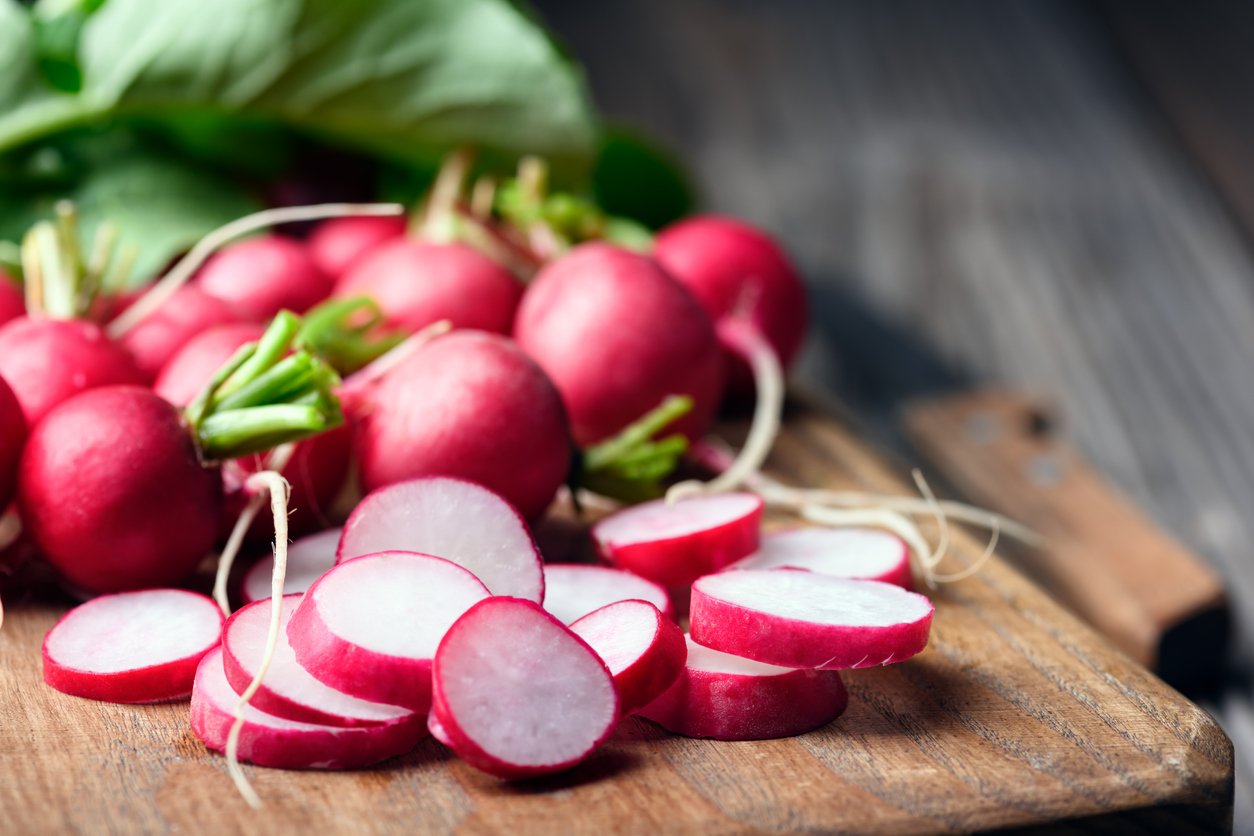
They’re cute. They grow in the ground and have a spicy bite. Plus, radishes can also take a bite out of breast cancer risk.
A 2011 study examined how radish extract affected a line of breast cancer cells in vitro (Latin for “in a test tube”). Researchers found that the radish extract slowed the growth of the cancerous cells. They also reduced the levels of some proteins that promote cancer growth and increased the levels of a protein that induces apoptosis (a process by which the cancerous cells self-destruct).
A 2017 study also explored the effects of sulforaphane, a compound sourced from radish seeds, on breast cancer. The researchers found that sulforaphane stopped cancer cell growth at a specific stage of their cycle, disrupted their structure, and prevented them from forming new colonies. It also induced apoptosis and a survival mechanism called autophagy (whereby the body eats its damaged cells).
2. Dragon Fruit
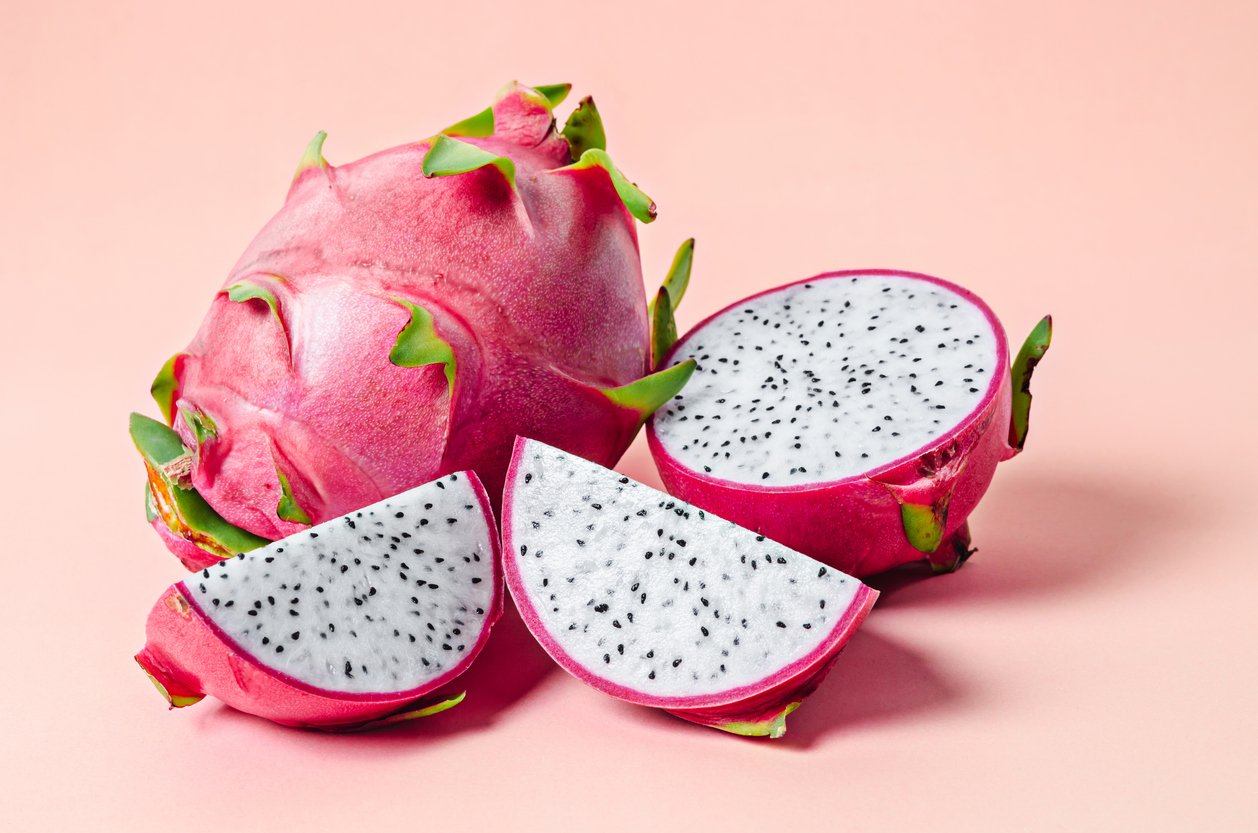
Dragon fruit, also known as pitaya, is produced by various cactus species native to southern Mexico. Research suggests that the fruit extract may help protect against breast cancer — particularly estrogen receptor-positive (ER+) types. Dragon fruit’s high antioxidant activity and significant levels of anthocyanins were found to reduce proliferation in ER+ breast cancer cells, induce apoptosis, and suppress the expression of key genes that can fuel cancer growth.
A 2022 study also discovered that pitaya extract exhibited significant anti-breast cancer activity. This included an ability to induce apoptosis in cancer cells by upregulating proteins that encourage self-programmed cell death in the cancerous cells.
3. Apples

Apples are packed with phytochemicals with strong antioxidant properties that can help prevent cancer. Regularly eating apples (and not just bobbing for them on Halloween) has been associated with lower risks of various cancers, including breast cancer. The compounds found in these apples can inhibit the growth of cancer cells and encourage their natural death.
Pink Lady apples, particularly their pinkish peels, are rich in flavonoids with potent antioxidative and anticancer properties. Research has shown that peel-flavonoids (which, thanks to fun-loving scientists, get their own abbreviation: Peel-F) are significantly more effective than flesh-flavonoids (you guessed it: Flesh-F) in inhibiting the growth of certain breast cancer cells and inducing cancer cell apoptosis.
4. Hibiscus
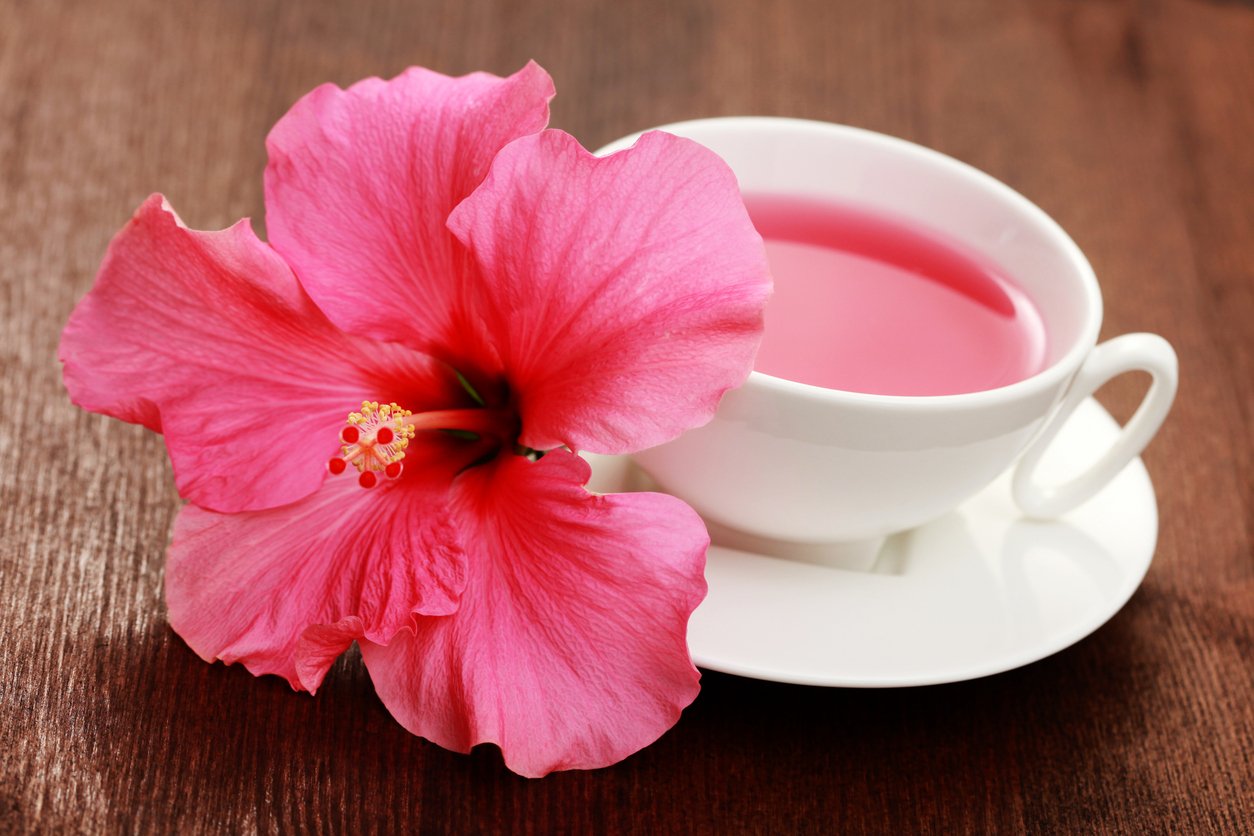
Hibiscus flowers are nutritional powerhouses known for lowering blood pressure, protecting the liver, and delivering a big antioxidant punch. You can get them in tea and use the fresh flowers in salads.
Two studies (2019 and 2022) explored the potential of hibiscus flower extract to fight breast cancer. Researchers found that hibiscus extract selectively induces apoptosis in two particularly aggressive lines of breast cancer cells: triple-negative and estrogen-receptor-positive. Hibiscus extract was found to enhance the cancer-killing effects of some conventional chemotherapies, especially those for difficult-to-treat triple-negative breast cancer.
5. Rhubarb
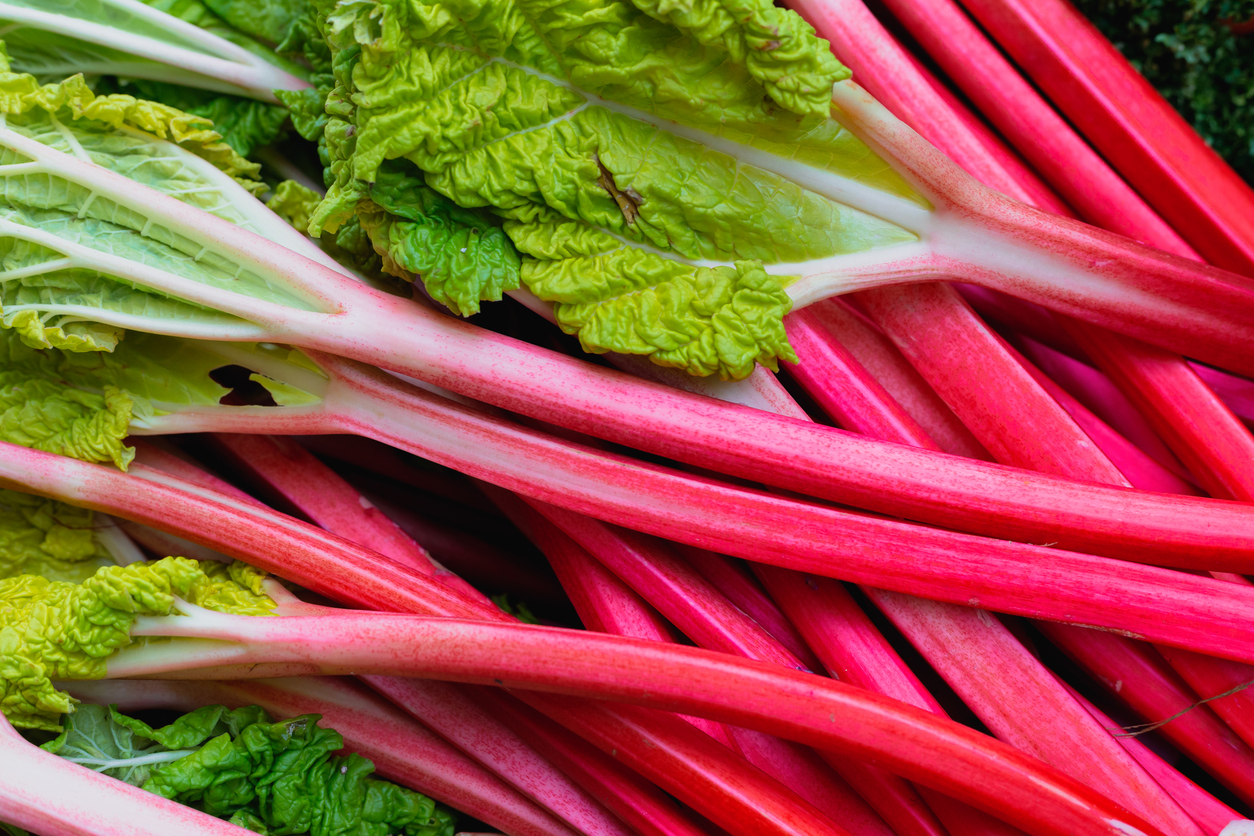
Yes, that rhubarb. The root that goes in the famous British pie. And that also charmingly refers to an altercation during a baseball game (Go figure!).
In 2018, researchers discovered that some compounds in rhubarb roots could kill breast cancer cells. Some compounds, like emodin and a chemical that sounds like a Game of Thrones character, rhapontigenin, triggered apoptosis in the cancerous cells. Another, chrysophanol 1-O-β-d-glucopyranoside, which sounds like one of the dinosaurs left on the cutting room floor from Jurassic Park, actually turned the cancer cells’ mitochondria against them, leading to death from the inside. Now that’s power!
In a 2020 study, researchers also found that emodin works better at stopping the growth of MCF-7 breast cancer cells the longer it’s used by activating specific proteins that are important in fighting breast cancer. So, regularly including breast cancer foods like rhubarb in your diet might be a good idea.
6. Pink Beans
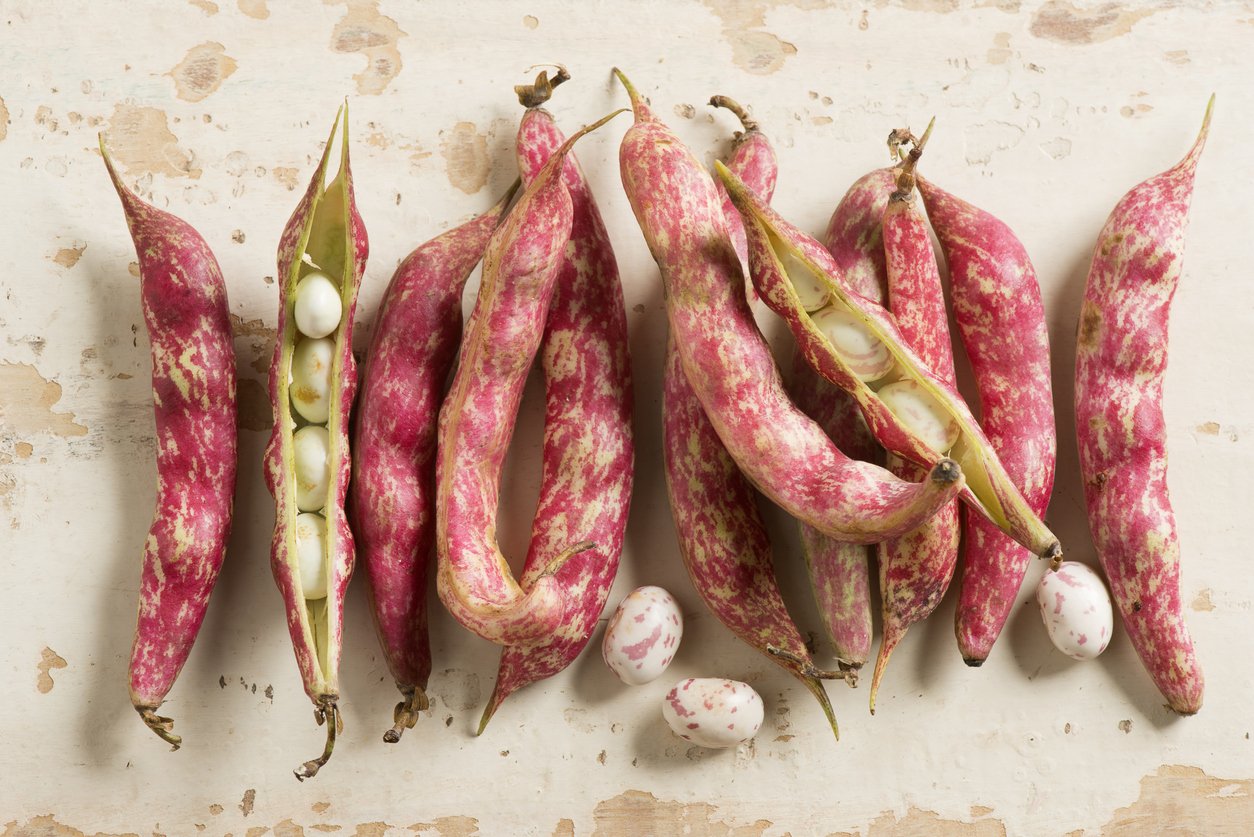
Pink beans feature prominently in Caribbean, Latin American, and Southern US cuisine. That’s a good thing since beans of all colors (not including jelly beans) are strongly associated with lower breast cancer risk.
A 2018 study in the San Francisco Bay area found that a high intake of beans was linked to a reduced risk of breast cancer, particularly among foreign-born Hispanic women. The two forms of breast cancer that were most affected were estrogen receptor and progesterone receptor types.
A 2021 study out of Iran also reinforced that beans can protect against breast cancer. Researchers compared the diets of 350 women diagnosed with breast cancer to those of 700 women of similar age and socioeconomic status who did not have breast cancer. They found that women who ate the most legumes had 46% lower odds of developing breast cancer compared to those who ate the least. This protective effect was even more noticeable in postmenopausal women.
7. Passion Fruit

Passion fruit is not just a delicious tropical addition to your diet; it may also have powerful protective effects on your health.
In 2019, researchers studied the effects of passion fruit seed extract on human cancer cells in vitro. They found that the extract significantly reduced cancer cell proliferation by inhibiting the activity of an enzyme associated with cancer growth.
And in 2023, researchers tested the effects of passion fruit leaf extract on breast cancer in rats. (Our view on the use of animals in medical research is here.)
In a test tube model, they found that the passion fruit extract inhibited the growth and proliferation of cancer cells, induced apoptosis, and reduced the cells’ ability to move around. In their bodies, it significantly decreased tumor incidence and the total number of tumors. It also boosted the rats’ antioxidant levels and reduced levels of pro-inflammatory cytokines.
Healthy Pink Food Recipes
Get ready to brighten your plate with these five plant-based recipes, each bursting with antioxidants and featuring a vibrant pink hue! From naturally pink ingredients like hibiscus, rhubarb, pomegranate, and radish, these dishes don’t just look beautiful — they’re packed with nutrients to support your health. Enjoy a delicious mix of flavors and colors while fueling your body with the antioxidant power of these wholesome recipes!
1. Simple Cucumber Asparagus and Radish Salad

The beauty of this dish lies not only in its flavor but its stunning pink hue, ribboned throughout thanks to the naturally vibrant radish! As it marinates, the flavors intensify; overnight is best for the full effect. Cucumber, radish, and asparagus are our top choices for salad veggies, but you can mix in any you have available. Whether served as a snack or a side salad, it’s a colorful, nutritious addition to any meal!
2. Pomegranate Poppy Dressing
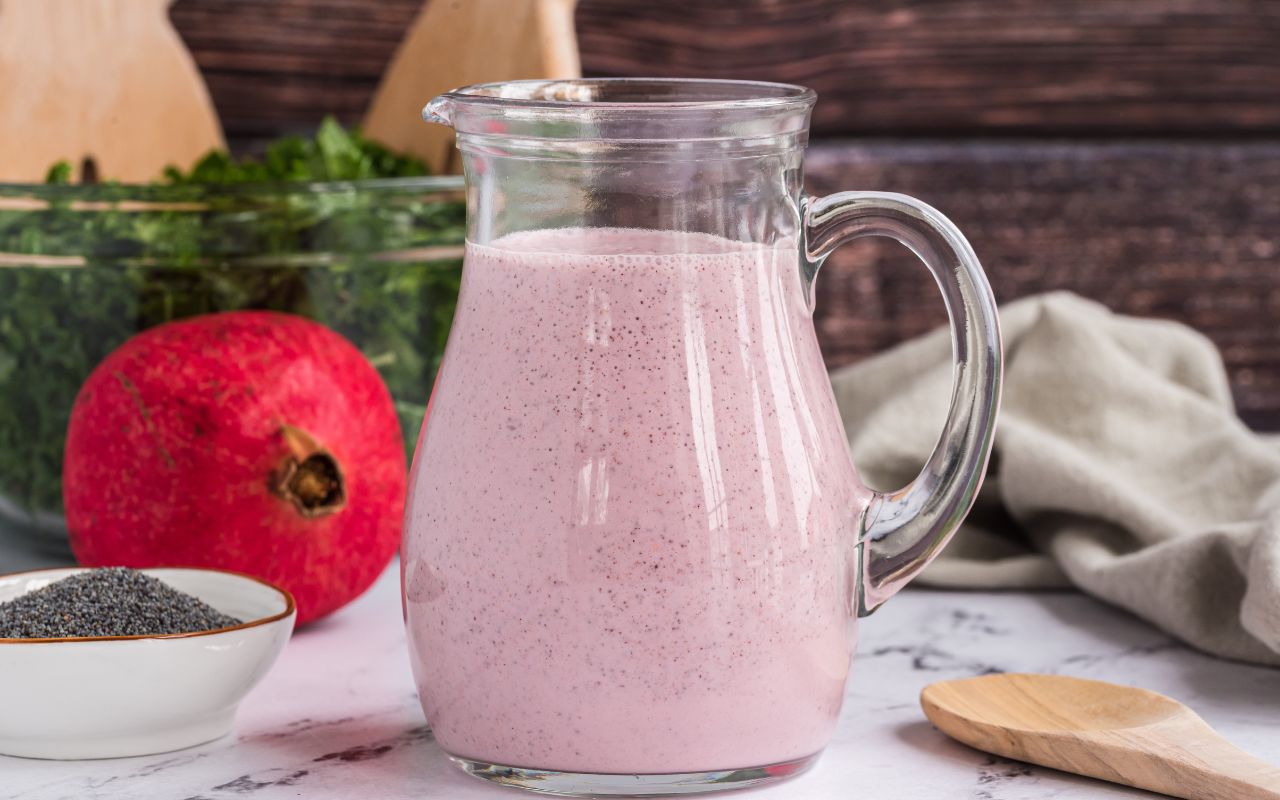
This dressing is as beautiful as it is flavorful, thanks to naturally pink ingredients like pomegranate arils. Combined with a creamy plant-based yogurt, sweet date paste, and tangy splash of organic apple cider vinegar, it’s as nourishing as it is visually stunning. The poppy seeds add a subtle crunch, making this vibrant dressing perfect for drizzling over salads or dipping veggies in style!
3. Hibiscus Herbed Cheese Crostini
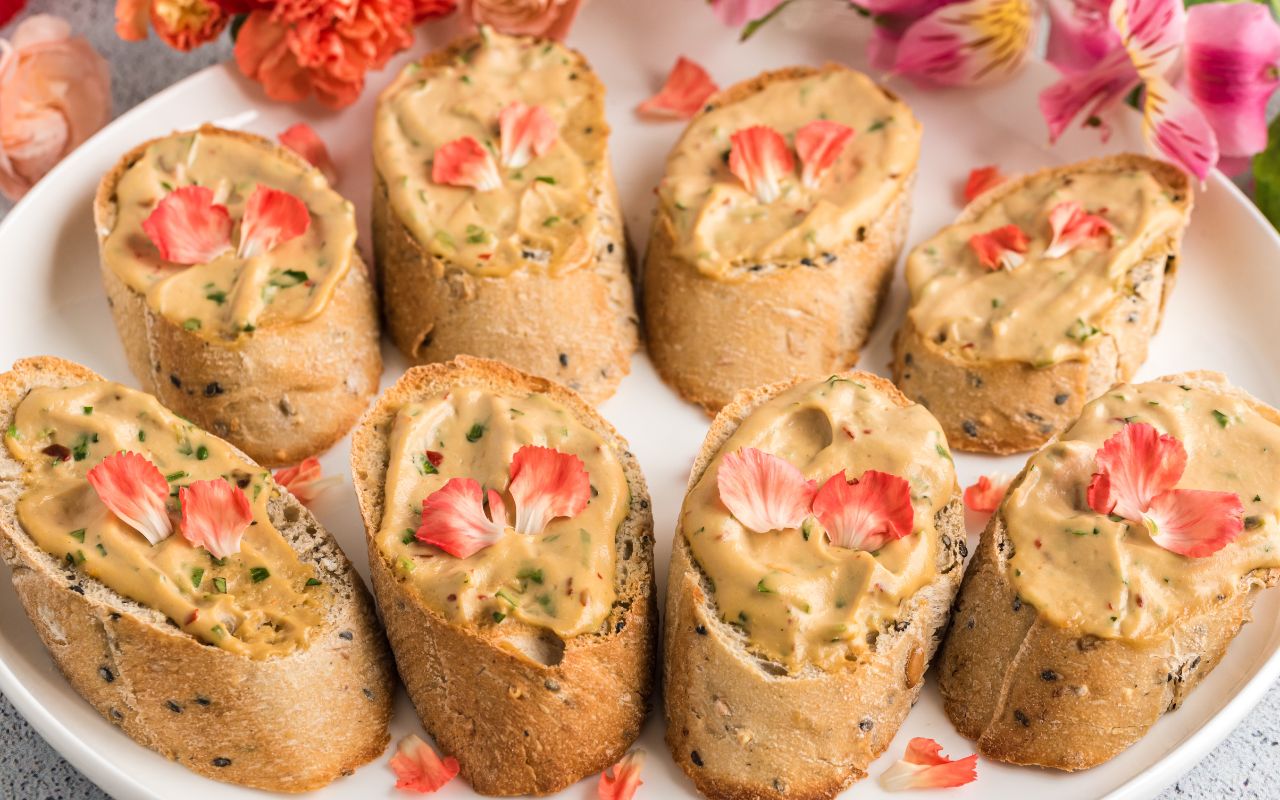
Take your appetizer platter to the next level with our Hibiscus Herbed Cheese Crostini, where naturally pink hibiscus brightens every bite. The mild flavor and bright color of hibiscus flowers pair perfectly with creamy cashew cheese made from savory miso, nutritional yeast, shallot, and lemon. Fresh herbs like basil, parsley, and chives add a refreshing touch, while a hint of red pepper flakes brings just the right amount of heat.
Spread this delicious herbed cheese on organic whole-grain baguette slices for a pretty-in-pink appetizer that’s as nutritious as it is beautiful!
4. Sheet Pan Strawberry Rhubarb Crisp
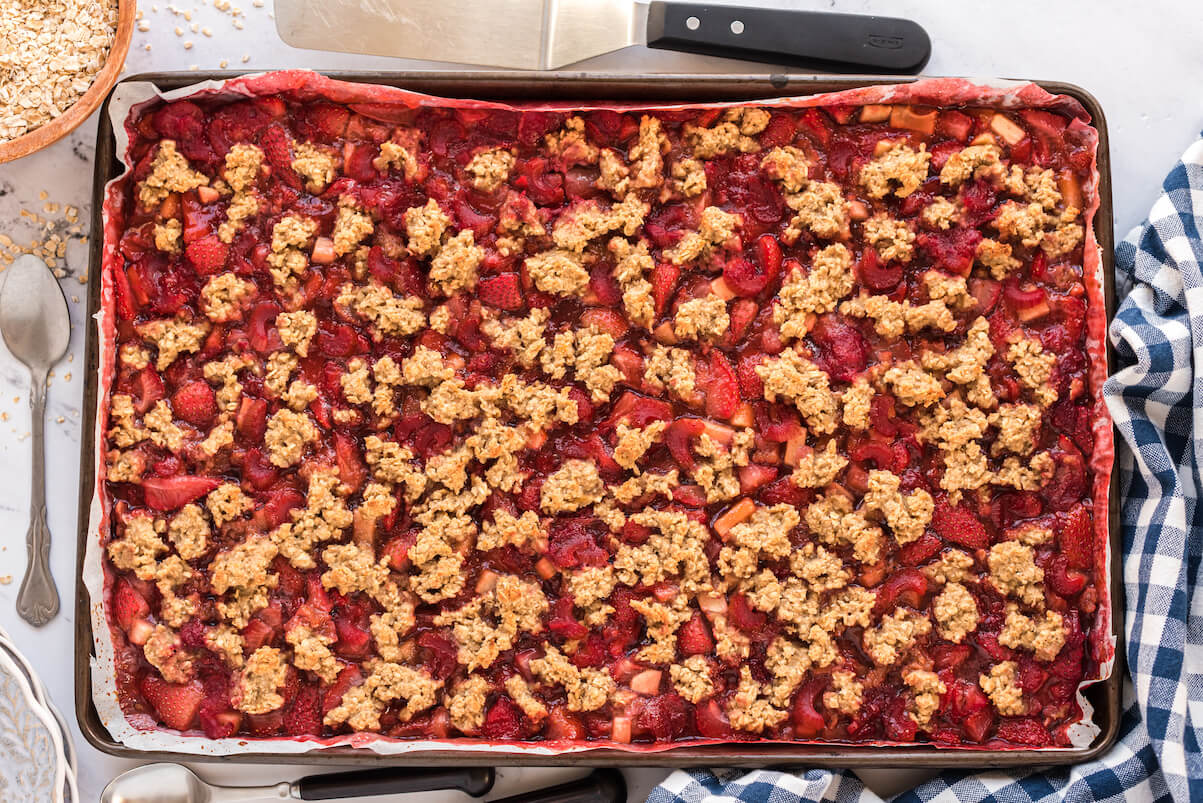
If there’s one thing we know about strawberries and rhubarb, it’s that their pretty pink colors are more than just for show. Their color comes from compounds called anthocyanins, which have been shown to cultivate a healthy gut, lower blood pressure, decrease cholesterol, and reduce the risk of certain types of cancer.
The crispy topping on this dessert is also packed with fiber and plant-based protein from the oats and almonds. How can something seemingly so indulgent be so good for us? All we know is that plants are magical!
Pair this sweet treat with vanilla nice cream for an extra special dessert experience.
5. Strawberry Hibiscus Refresher
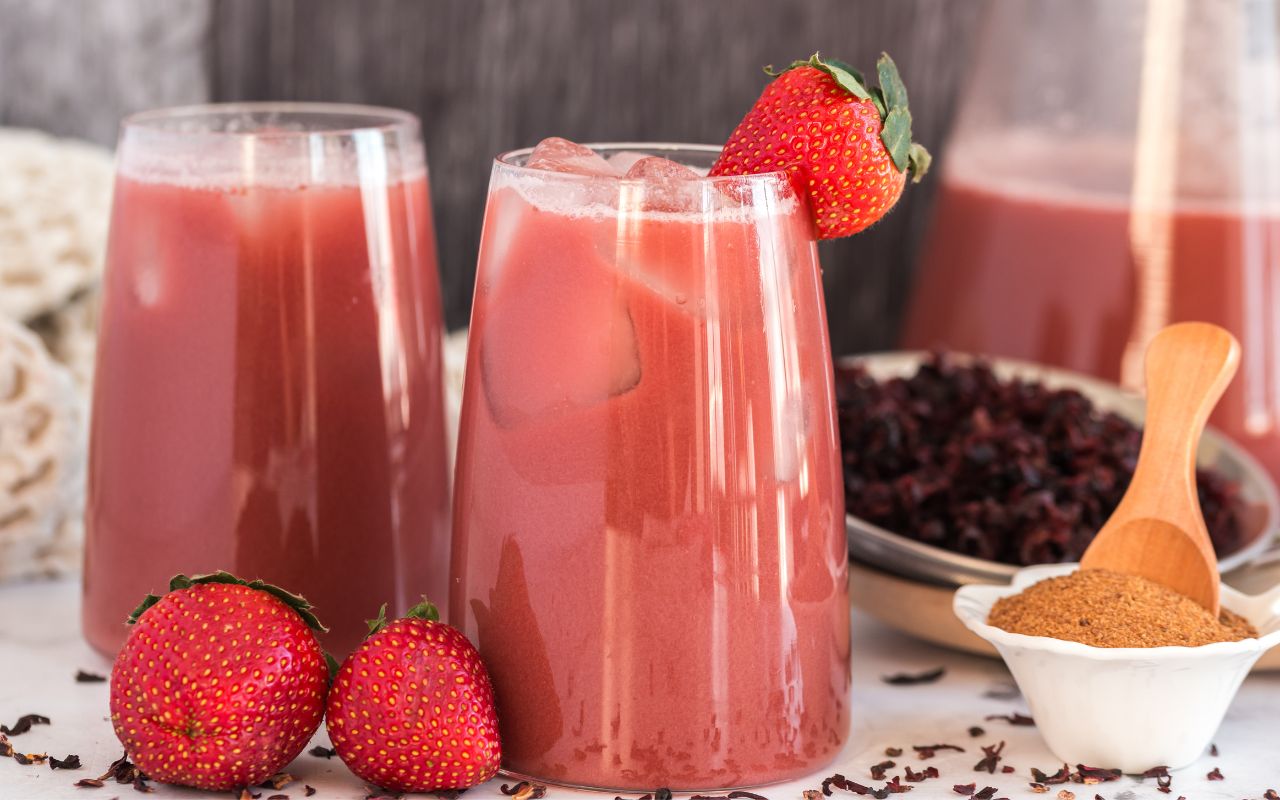
This vibrant pink drink highlights the bold, tart flavor of hibiscus flowers steeped to create a fruity concentrate. The Strawberry Hibiscus Refresher is a delightful blend of flavors, with pureed strawberries, a hint of coconut sugar for sweetness, and a touch of light coconut milk for creaminess.
Enjoy this cool and refreshing drink anytime you need a moment of relaxation. Let the unique taste of hibiscus brighten your day.
Go Pink — with Nature!
Breast Cancer Awareness Month is an important time to raise awareness and funds to address one of the world’s most devastating illnesses. But instead of just relying on “pinkwashed” products to show your support, you can also focus on the many things you can do to reduce your cancer risk, starting with your diet.
Thinking beyond the pink ribbons, you can make diet and lifestyle choices that can positively impact your health destiny. By choosing naturally pink breast cancer foods, you can embrace the spirit of the month while making choices that align with a nourishing, health-forward lifestyle.
So, this Breast Cancer Awareness Month, let’s “go pink” in the most wholesome way possible — by filling our plates with naturally pink, nutrient-packed foods that truly honor our health.
Tell us in the comments:
- What types of “pinkwashing” have you witnessed?
- What naturally pink foods are your favorite?
Featured Image: iStock.com/bhofack2

